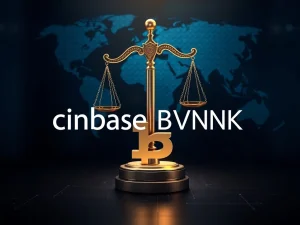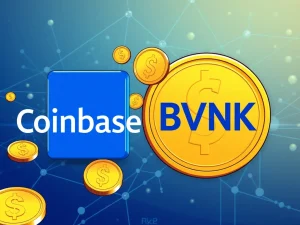Tokenized Equity: Navigating the Crucial Regulatory Gray Zone for RWA

The world of finance is rapidly evolving, with real-world assets (RWAs) making their way onto the blockchain through tokenization. While this promises exciting new investment opportunities, especially in areas like tokenized equity, it also introduces significant challenges, particularly concerning regulation. Investors and industry players are grappling with a complex landscape where the legal status and rights associated with these digital tokens remain unclear.
Understanding the RWA Regulatory Challenge
At the heart of the issue is the distinction between holding a token representing an asset and holding the actual underlying asset itself. As industry experts highlight, possessing a tokenized representation often does not grant the holder the same legal rights as owning the traditional instrument.
- Tokens may track the price of an asset but don’t confer ownership of company shares.
- Holders typically lack voting rights or direct claims on company assets.
- Access to internal financial information is usually not provided to token holders.
This creates a significant ‘gray zone’ where the benefits and risks for investors are not always equivalent to traditional markets. The structure often involves intermediaries issuing tokens that entitle holders to payouts based on the underlying asset’s performance, rather than direct ownership.
Incidents Highlighting the Tokenized Equity Confusion
Recent events underscore the potential for confusion in the market. When trading platforms offer tokens linked to private companies like OpenAI or SpaceX, it can lead retail investors to believe they are buying equity in those firms. The OpenAI token incident, where the company had to clarify that the tokens offered were not company equity, is a prime example of this confusion.
Attorneys note that such incidents, where tokenized securities are marketed in ways that create material confusion, are likely to recur without clearer guidelines. This emphasizes the urgent need for comprehensive regulation specifically tailored to tokenized equity instruments.
The Compelling Case for Tokenized Equity and RWA
Despite the regulatory hurdles, the industry sees a strong case for tokenized equity and broader RWA tokenization. The technology has the potential to integrate multiple functions of a securities marketplace into a single system, improving efficiency and accessibility.
Key potential benefits include:
- Democratizing access to asset classes previously limited to accredited or institutional investors.
- Increasing liquidity for traditionally illiquid assets.
- Potentially enabling 24/7 crypto trading of these assets.
Industry Push and the SEC’s Stance on Tokenized Assets
The push for clearer rules and the ability to offer tokenized equity trading is gaining momentum. Several major players in the crypto space are actively pursuing this.
- Platforms like Kraken and Bybit already offer tokenized stock trading for publicly listed companies.
- Centrifuge is working with S&P Dow Jones Indices to explore tokenizing major indices like the S&P 500.
- Coinbase is reportedly seeking approval from the United States SEC to offer tokenized stock trading.
Interestingly, the SEC appears receptive to discussions around tokenized financial assets. Recent comments from SEC Chairman Paul Atkins indicate a focus on advancing innovation in the marketplace, suggesting an openness to understanding how tokenization fits within existing or new regulatory frameworks.
The Path Forward for Tokenized Equity and Regulation
The future of tokenized equity and RWA tokenization hinges on achieving regulatory clarity. While the technology offers exciting possibilities for expanding investment access and efficiency, the current gray zone poses risks for investors and creates uncertainty for platforms. A collaborative effort between regulators and the industry is essential to establish clear guidelines that protect investors while fostering innovation in crypto trading and beyond. The SEC‘s receptive stance is a positive sign, but significant work remains to define the legal rights and obligations in this evolving digital asset class.







